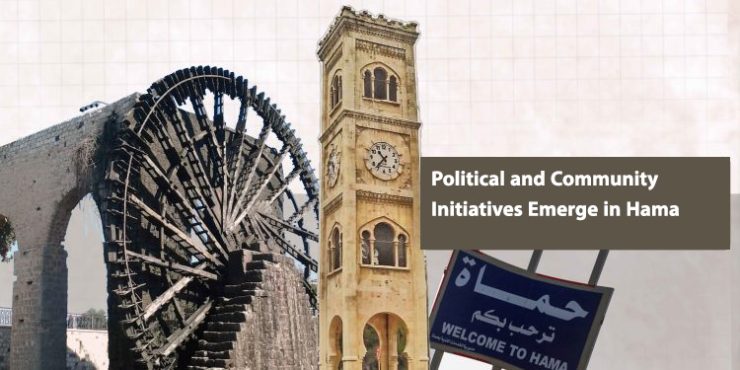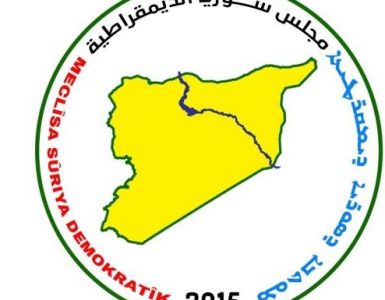By Diyaa Al-Assi
HAMA, Syria (SDC) – Hama governorate, located in the central part of Syria, has gone through a series of significant political and security developments. These events did not begin with the outbreak of the Syrian revolution in 2011. Rather, they are rooted in a long history of opposition to the Assad regime. This history is most notably marked by the events of 1982, when the city witnessed one of the most violent crackdowns in modern Syrian history.
With the start of the revolution, Hama quickly emerged as a powerful symbol of defiance. It became known for resisting authoritarian policies and refusing to submit to repression. As a result, the regime placed Hama at the top of the list of cities targeted for collective punishment. The city suffered from ongoing security crackdowns and a deliberate policy of marginalization. Residents were subjected to continuous pressure; especially as essential public services were either denied or severely limited. Despite these challenges, the people of Hama, driven by their city’s strategic location and their own determination, stood up and resisted. They transformed their city into a living example of a population unwilling to accept humiliation or the erosion of their dignity. Today, following the collapse of the Assad regime, Hama is witnessing a new chapter.
Emerging political dynamics are beginning to reshape the landscape. Service-related issues are also coming to the forefront. This transformation is increasingly evident through community-driven initiatives with a political character, aimed at achieving stability in both the city and countryside of Hama.
These local initiatives, which gained momentum following the fall of the previous regime, have sought to reshape the future of a city long burdened by injustice and marginalization. The growing political activity since then reflects the aspirations of Hama’s residents to strengthen their participation in decision-making processes and to play an active role in managing their city’s affairs. In light of this emerging political organization, Hama now finds itself at the threshold of a new reality—one centered on recovery, reclaiming its role, and fulfilling the political, economic, and social aspirations of its people.
Hama Experiences Political Renewal
Following the political shifts that came after the fall of the Assad regime, political movements in the city began taking their first steps toward shaping a new political landscape. The goal has been to achieve stability and ensure the provision of essential services. The people of Hama are recognized for choosing dialogue and discussion as their main approach in engaging with various political and societal movements. This approach has led to positive outcomes for the city and its services. The repeated meetings held at the Hama Governorate building, and the discussions that took place there, contributed significantly to tangible improvements across various sectors.
Also: Transitional Justice in Syria: Challenges and Mechanisms on the Path to Recovery
In this context, lawyer Abdul Karim Al-Nahal, a member of the Syrian Future Movement, affirmed that Hama is witnessing a clear political improvement aimed at achieving stability and securing the services in the city and its countryside urgently. Al-Nahal stressed that the political activity in Hama should be considered a model to follow—particularly in a city that endured years of injustice under the Assad’s rule.
He added, “Today, the city is witnessing two complementary paths. The first one involves opening discussions about Syria’s future and defining what Syrians expect from the new administration. The second focuses on utilizing this political movement to exert pressure for improving the reality of services in both the city and the countryside.
This interaction between the two paths has marked the beginning of political and economic recovery. It has also fostered a growing sense of security among residents, thanks to the activation of community initiatives and the strengthening of dialogue and communication.”
Al-Nahal pointed out that there is daily communication with the Governor of Hama, Abdulrahman Al-Suhiyan. He confirmed that the Syrian Future Movement, along with other political groups, regularly submits proposals aimed at improving the service and economic sectors. He noted that the constructive discussions with the governor have led to practical steps. These steps have been reflected on the ground through noticeable improvements in basic services such as water and electricity. Cleanliness campaigns have also been implemented across the city. In addition, the visible presence of security personnel throughout neighborhoods and streets has further reinforced the general sense of safety among citizens.
Hopes and Aspirations Await Realization
Rashid Al-Tabbah, former member of the Chamber of Commerce and Industry and head of the “Dignity of Syria” movement, explained that the political activity and field visits across various areas of the governorate have led to the emergence of a new political and social landscape. He pointed out that many hopes and aspirations among the residents still await governmental support and tangible implementation on the ground.
Also: Tamasok Coalition Shapes Syria’s Future on Equality and Justice
Al-Tabbah stated, ” Through our repeated meetings with residents of both the city and the countryside, we observed that the majority are calling for improvements in living and economic conditions. They consider these to be the foundation for political and security stability. People have conveyed to us their suffering—especially due to arbitrary dismissals and salary suspensions, which have threatened the livelihood of thousands of families. We took these demands seriously and initiated a meeting with the governor, who responded by reinstating many dismissed employees, while other cases remain under review.”
He confirmed that the new administration, represented by the governor, is handling matters with transparency and maintains continuous coordination with residents, as well as with political and community groups. The regular meetings with both the security authorities and the governorate aim to clarify the situation from all aspects. Al-Tabbah added that this cooperative atmosphere has generated a sense of public reassurance. He continued, “We are currently working on forming a political committee composed of representatives from various regions of the governorate. Also, we plan to establish a dedicated office for it within the governorate building. This reflects the new, positive atmosphere now prevailing in Hama.”
Today, the city of Hama is witnessing dynamic political and societal activity that has contributed to strengthening the values of citizenship and coexistence, while enhancing stability across various dimensions. According to the city’s residents, these developments have helped achieve a degree of security stability, which they view as the essential first step toward broader stability and overcoming the crises of the past experiences.




